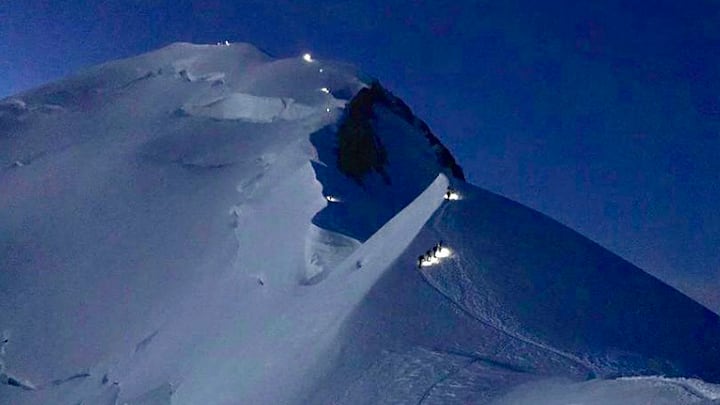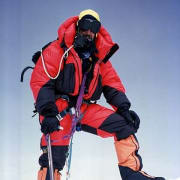Four Missing Climbers Found Dead on Mont Blanc

Death on Mont Blanc
Two Italian, and two South Korean climbers were overwhelmed by a storm on the icy slopes of Mont Blanc on September 7th. All four climbers perished , and were found by rescue teams on September 11th at approximately 14,800 ft. The Italian climbers, Sara Stefanelli and Andrea Galimberti, both 40 yrs-old, desperately made calls to authorities while stuck in the area of Mur de la Cote – an ice ridge on the French side of Mont Blanc that leads to the summit. Rescue attempts over the past two days were hampered by inclement weather, which grounded rescue helicopters.
Kris Annapurna reported in an article on September 9th in ExplorersWeb, that one or both of the climbers fell into a crevasse. They managed to climb out of the crevasse and make cell phone contact - “Help, we risk freezing to death!” they reportedly said. In addition to these four unfortunate deaths, a 35 year-old Romanian mountaineer fell approximately 1,000 feet to his death in the Couloir du Goȗter – known as the Death Corridor. Witnesses called emergency services when the climber made a technical error and fell from the mountain. These deaths provide a sobering reminder of the risks associated with climbing in the Alps, where weather changes at astonishing speed, and the terrain, though accessible, presents extreme technical difficulty and exposure.
Mont Blanc
Mont Blanc, whose name translates to "White Mountain," straddles the French-Italian border and is renowned for its breathtaking beauty, challenging climbs, and significant role in the history of mountaineering. It is the highest peak in the Alps and Western Europe, standing 15,774 ft. It is mystical, historic and a dream for adventurous mountaineers, and known as the birthplace of modern alpinism. Mont Blanc offers a legitimate and challenging mountaineering experience, attracting climbers from around the world. The mountain is covered in snow and ice year-round, with glaciers, including the iconic Mer de Glace, adding to its spectacular, though daunting, landscape.
Most Popular Climbing Routes
The most common route to the summit is the Goûter Route, also known as the "Voie des Cristalliers." This route starts from the town of Saint-Gervais-les-Bains and involves taking the Tramway du Mont Blanc to the Nid d'Aigle (Eagle's Nest) at 2,372 meters. From there, climbers ascend to the Tête Rousse Hut (3,167 meters) and then to the Goûter Hut (3,835 meters). Climbers begin the final push to the summit early in the morning and navigate the challenging Bosses Ridge.
The Trois Monts Route is another popular route for mountaineers. It begins at the Aiguille du Midi and traverses Mont Blanc du Tacul and Mont Maudit before reaching the summit of Mont Blanc. The route is technically demanding, requiring climbers to be proficient in ice climbing, glacier crossing, and crevasse navigation. Climbing Mont Blanc requires thorough preparation, as it is loaded with risks. Weather conditions can change rapidly in the Alps, and Mont Blanc. Climbers must be prepared for extreme cold, high winds, and potential avalanches. I always advise climbers with moderate experience to hire local guides for the Mont Blanc challenge. Guides not only improve safety, but increase the likelihood of a successful summit experience.
Location and Climbing History
Mont Blanc is part of the Graian Alps, a subrange of the Western Alps. It is located between the Aosta Valley in Italy and the Haute-Savoie department in France. This mountain massif is surrounded by historic towns including Chamonix in France and Courmayeur in Italy, both of which serve as popular bases for mountaineers and tourists.
The Mont Blanc Massif includes several other prominent peaks, including Mont Maudit, Mont Blanc du Tacul, and Aiguille du Midi. The region is characterized by its rugged terrain and vast glaciers, which form a dramatic and picturesque landscape that attracts adventurers from around the world. It is also known as the birthplace of modern alpine mountaineering. The first recorded ascent was made on August 8, 1786, by Jacques Balmat and Michel-Gabriel Paccard. This historic climb set the tone for future expeditions, and established Mont Blanc as an iconic destination for mountaineers.
